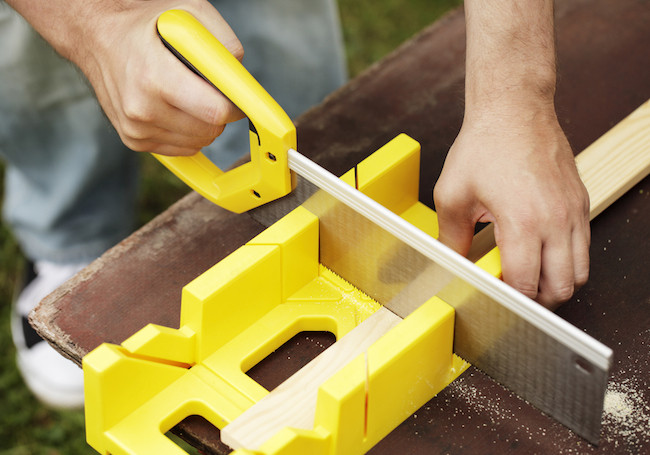If you have access to a table saw, you can place the cylinder against the miter guide and carefully advance it into the blade.
For a non-power-tool related option, a hand saw miter box will provide similar, perhaps easier alignment. The typical hand saw will chew up the ends of the cylinder, but here's the good part. Use rubber cement to attach a sheet of sandpaper of desired grit to the side of the saw blade.
It may be necessary to shim the cylinder to place it higher than the saw blade teeth. As you press the cylinder against the front or back of the miter box, you'll also apply pressure toward the sandpaper coated blade. Rotate the cylinder as you sand to avoid irregularities caused by the fore and aft motion of the saw.
It helps if you have three hands and especially if you bolt or otherwise clamp the miter box to a solid surface.

Depending on your skill set, you can construct your miter box, buy a kit or purchase from retail.
I have a hobbyist grade milling machine. I can clamp the cylinder in the vise, true it up to a few thousandths of an inch and mill the end true. That's overkill, and also a power tool option.
A good disk sander will have a miter guide and will be true to the disk plane, but again, expensive power tools may not be your best selection.
If you have the ability to drill a hole to match your cylinder squarely in a piece of wood, you can insert the cylinder and shave away the off-true portion with a plane, or use a sanding block. This last option is the least-tech, least-equipment method one can use, I believe.
EDIT:
Another glance at your images shows that the protrusions on the cylinders may cause some out-of-true results. If you have a continuous line on the side of the cylinder to use as contact point for the miter box, the chance of success is higher. For a miter box to work, you'd have to have two lines clear, ninety degrees apart.
For the hole-in-the-board method, you could get away with slicing into the edge of the hole clearance slots for the protrusions. The remainder of the hole's edges would provide the support and alignment needed for a good result.


